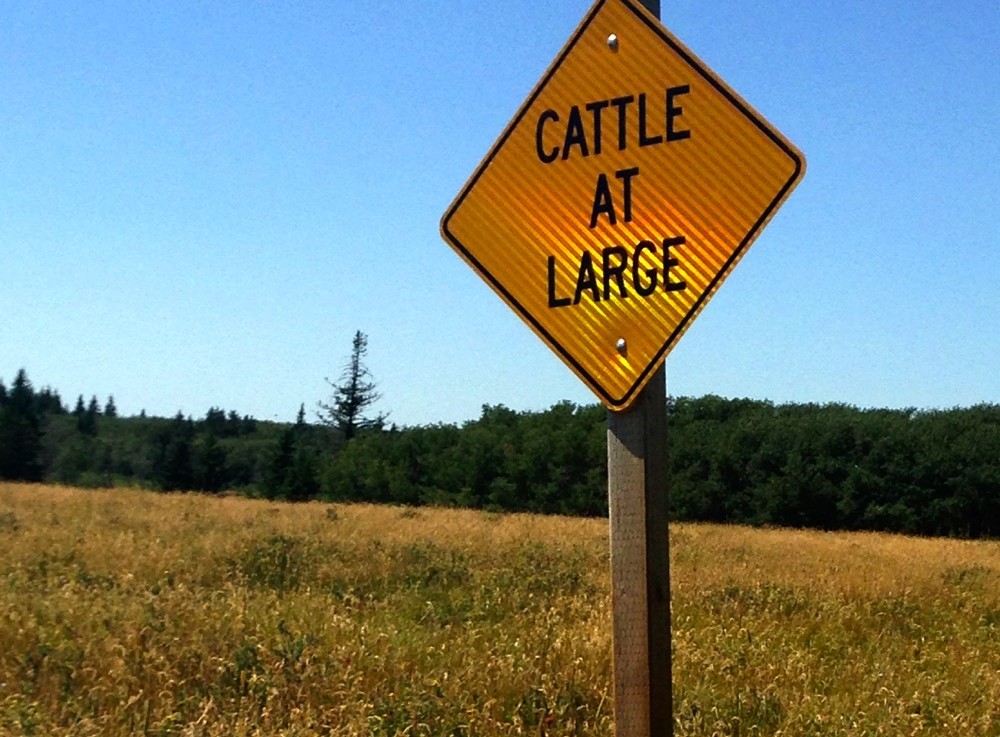Kevin and Judy Wilkinson have never been afraid to take the road less travelled, as I learn while navigating their winding driveway on a late-spring weekend. Four-wheel drive is a must to get through the thick mud here, and the laneway snakes through the boreal forest for about two miles before stopping at their ranch, Trail’s End Bison.
On the south side of the driveway is a sliver of Thunderchild Reserve, which butts up against northwestern Saskatchewan’s Turtle Lake. On the north, bison stare from behind pasture fence. One bull slowly rises to his feet, vigilant.
Read Also

How to grow a finance team for your agribusiness
Typical growing pains for an agribusiness include managing the overhead of accounting and finance. I like to think of the…
The laneway opens into a clearing. A ranch house with wood siding and a large deck are the first things you see. An Esso sign in mint condition hangs from an outbuilding fashioned like an old gas station.
The Wilkinsons have been running bison from this ranch since 1977, shortly after Kevin’s interest in bison was sparked during his first job, at Al Oeming’s game farm near Ardrossan, Alta.
“I worked up there for one winter, and the buffalo — both the Wood and Plains — were on my feed route,” Kevin recalls.
Kevin settled into ranching and started raising cattle. But he still had bison on the brain, so he and his brother-in-law, Rick Hartley, bought two bison cows with calves, plus a bull, from a producer near Maidstone, Sask.
“That was our start. And pretty soon we got rid of the cattle, and just got into the buffalo more,” says Kevin.
Judy soon got involved too, and in March 1982 was elected to the first board of directors for the Canadian Buffalo Association. At that time, Canada had roughly 175 bison producers, and 54 became members.
- From the Alberta Farmer Express: Alberta bison producers putting out the welcome mat for new entrants
Marketing bison was easier said than done when Judy and Kevin started out. “You never really knew who was going to buy these bulls that were ready to go,” says Judy.
At the Canadian Buffalo Association’s first sale in 1982, yearling heifers averaged $875 and yearling bulls $775.
In the early ’90s, the exotic market started taking off, and bison heifers were suddenly valuable breeding animals. A young couple bought the Wilkinsons’ best heifer calves for $1,500 apiece. “And we were just dancing because we thought, ‘We’ve got it made,’” says Kevin.
But that was just the start of the skyrocketing breeding market. The Wilkinsons sold heifer calves for $5,000 to $6,000 in 1996. Cows went for $9,000.
“It’s absolutely unreal when you think of it now, how people were so desperate to get a buffalo,” says Kevin.
The good times didn’t last forever, though. A sharp market correction was followed by drought and BSE. Business was so lean the Wilkinsons sold yearlings for around $400.
“You couldn’t make a living on it,” says Kevin.
Though Kevin and Judy had made money during the boom, they’d also kept back a lot of heifer calves, expanding their herd. They knew they had to do something to boost their revenue. And that is how, as they recovered from the crashing market, they mapped out a new path to add value to their bison.
In 2004, the Wilkinsons started marketing Trail’s End Buffalo Stix.
“Most people, when they think of jerky, they think of the old full-muscle product, hard to chew and spicy,” says Kevin. “They don’t realize that ours is totally different because it’s a ground jerky, it’s very moist, it’s easy to chew.”
Judy worked with Saskatoon’s Food Centre in Innovation Place to develop the recipe. Another bison producer was adding saskatoon berries to jerky, so to avoid competing directly with that product, they first tried blueberries, but the final product proved too moist.
But cranberries added flavour without too much moisture. They christened the winning recipe Cranberry Craze.
Today Kevin and Judy have two lines of Cranberry Craze Buffalo Stix. The provincially inspected line is processed at Drake Meats, located in Drake, Sask. The Drake Meats line includes bison from Kevin and Judy’s own herd.

Any food products sold outside the province have to be sourced through a federally inspected system, however, so the Wilkinsons also process a line at the Food Centre. Federal regulations require the animals to be slaughtered in a federally inspected plant, and Kevin and Judy are a long way from the closest facility, so they buy prime cuts with less fat.
The Wilkinsons have talked about adding other flavours, but that would necessitate another production run, separate labels, more packaging, and more samples, says Kevin.
“And I don’t necessarily think it would up your sales. I think it would just change your sales. More work for less,” says Judy. “Plus we can’t get enough production time for what we want now.”
During our conversation at their kitchen table, neither of the Wilkinsons utter the word “branding.” But it’s clear they’ve attracted a loyal following.
The Wilkinsons aren’t looking to develop a big market because their production capacity is limited. But they tried out many different marketing strategies before hitting on what works.
 These days they focus on consumer-direct sales, such as trade and craft shows, plus mail orders. Spring and fall are busy times for them as they hit shows from Fort McMurray and Calgary to Regina and everywhere in between. Last year they sold their products at 26 shows.
These days they focus on consumer-direct sales, such as trade and craft shows, plus mail orders. Spring and fall are busy times for them as they hit shows from Fort McMurray and Calgary to Regina and everywhere in between. Last year they sold their products at 26 shows.
Knowing how to engage people so they try a sample is important, Kevin says. Judy agrees, adding, “I call it the five-second rule. It takes five seconds for the sample to hit their mouth before their face goes, ‘Oh my God.’”
In 2011 a customer nominated their Buffalo Stix for the Canadian Space Agency’s Snacks for Space, and Canadian astronaut Chris Hadfield voted to ensure they made the trip to the International Space Station.
“We got customers out of that,” says Kevin. “That was a real boost.”
Nor was the customer who submitted the nomination an anomaly. The Wilkinsons have repeat customers who drop by while they’re on the show circuit.
Judy says it’s easy to sell a stick of jerky because it’s an impulse buy. “But it’s the people who buy from you all the time that build your business. And I’m always really grateful to them because that’s what makes your business.”
These days Kevin and Judy use Apple’s Square Reader to accept payments at trade and craft shows. Before Square, they only accepted cash or cheque so they could avoid the bite of transaction fees. But many customers carried neither, and they tended to lose sales when people went to the ATM, and never came back.
So they allowed people to take product home and mail a cheque later.
“I figured I’d rather feed people than Visa,” says Judy. They’ve left shows with various customers owing them $800 in total, but they’ve rarely been burned.
And people not only repay Kevin and Judy’s goodwill by buying product, but by offering them ideas too. For example, a customer wanted a family-size pack, so the Wilkinsons created it.
“We’re always listening to people,” says Judy.
Judy had what she calls a profound moment last year at a show in Red Deer. A woman dropped by her booth and told her, “You’re first on my list. You’re the reason I came to the show.”
Judy and Kevin still keep an eye out for new markets, however.
An Ontario group called the Carnivore Club is featuring their Buffalo Stix in June. The club sends a package of gourmet meat products to its members each month.
“So that’s a pretty cool thing because that’s going to be a group of people who have never, ever heard of us before,” says Judy.
Plenty of challenges
“In the food industry, everything costs a lot of money,” says Judy. Products that don’t fit in stock boxes require a special die, which can cost thousands, she adds. “But we’ve been really, really lucky in that everything we produce fits in stock boxes. Little things like that have just flowed.”
Kevin and Judy have also managed to keep the business risk at a manageable level.
“Because we started so small and just did the little steps all along, we didn’t get into a bind where we had a huge investment,” Kevin says. “I think that’s the trouble with a lot of businesses. They start too big.”
Making and packaging jerky is labour intensive. A different butcher used to process their provincial line, and because the business had an old cryovac machine, Judy had to open each bag, fill it with product, stuff it into the machine, and seal it.
“I did 35,000 (packages) that year and got tennis elbow really bad,” says Judy. “So I came home and said to Kevin, we’ve got to change this. We’ve got to do something different.”
The tennis elbow spurred the switch to Drake Meats, which has a larger, mechanized cryovac machine.
Flexibility and patience are also important when it comes to dealing with the supply chain, says Judy. “When you don’t do it yourself, you’re totally at the mercy of everyone else.”
Last year they had a batch of product that lost its seal. “So you’re already selling product that’s unacceptable. And you get feedback. And of course we were more than willing to reimburse (customers),” says Kevin.
But the bigger worry is the customers who didn’t contact them, Judy adds, especially as they may have been first-time buyers.
Lately the U.S. has been draining Canada’s bison herd, and more bison producers are retiring while prices are good. This makes it harder for Judy and Kevin to source meat for their federal line, especially as dwindling supply means higher prices for those prime cuts.
“You don’t want to run out of meat because you’ve got shows booked,” says Kevin. And because the Food Centre has so many clients, it’s hard to book in with them, he adds. “So there are only so many spaces in the whole year that you can actually get your product made.”
But Judy managed to buy most of the meat she’ll need for the upcoming year before prices jumped.
Somehow, it all comes together. For instance, tracking inventory is an important task for traceability and to see which products are making money. Judy picked up those skills at a previous off-farm job, although she says when she finished the job, she thought, “What am I ever going to do with that?
“Things that you think are nowhere in life end up being really beneficial,” she says.
After 10 years, Kevin and Judy say they wouldn’t do anything differently. “It’s like every single little thing has added to what we do now,” says Judy.
Perhaps that’s proof enough. As the poet wrote, taking the road less travelled can make all the difference.















